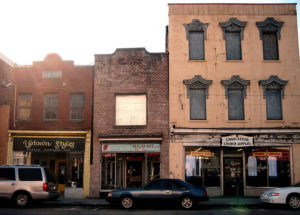The recent church shooting made Charleston, South Carolina, the center of the nation’s debate on race. Much has been written about South Carolina’s turbulent racial history. However, another story is now being reported in the media. Charleston used to be a city where about half of the population was Black, but now that number has dropped to about 25 percent. The city is undergoing gentrification as middle-class white people move into traditionally Black neighborhoods, according to NPR.
“The city of Charleston itself has seen major racial shifts in its population over the past few decades: since 1990, the Black population has dropped from 42 percent to 23 percent, according to the U.S. Census Bureau. One neighborhood undergoing this transition is located just north of the site of the shooting, Emanuel African Methodist Episcopal Church,” said NPR reporter Hansi Lo Wang.
Charleston is redeveloping urban areas and marketing them to white professionals who want to be closer to work and the city’s center. Gone are the days of living in the suburbs and long commutes, as it seems more professionals are opting to live in urban areas where work is a short walk away. This is a national trend. Although gentrification has previously been seen as a problem mainly confined to New York City, cities like Washington, D.C., Chicago, Detroit and even Houston, Texas are now seeing urban centers gentrified. And it’s not just Black tenants who are being pushed out by rising property prices. Artists, who have been attracted to quirky neighborhoods, low-rent neighborhoods, are also being priced out of rental property.
Writing in AlterNet, Anis Shivani said low-income residents are being forced to leave as formerly minority neighborhoods in Houston are being converted into luxury condos. However, the former residents are finding it difficult to locate affordable housing.
“Like many others here, (my neighbor) Angela has little idea of how to proceed because there is no affordable housing within the city. Buying is out of the question, as tiny houses cost half a million dollars and decent-sized houses a cool million,” Shivani said.
Both national and international media have done several stories about Chicago’s urban warfare. (The city has been nicknamed “Chiraq.”) However, the murder rate in Chicago has been dropping, in spite of the lurid headlines. An article in DNAinfo said FBI figures showed Chicago’s murder rate was three times lower than Detroit’s.
“The federal agency released data showing that between Jan. 1, 2012, and Dec. 31, 2013, the murder rate in Chicago dropped 16.4 percent. In 2012, the city logged 500 murders; in 2013, there were 414 murders, the FBI said,” said DNAinfo writer Tanveer Ali.
Some Black residents have suggested violence is being played up in the media, so the city can use it as an excuse to push out low-income residents and turn over the land to developers, who can build expensive property.
As low-income residents get pushed out of inner city neighborhoods, they inevitably move to more affordable areas, and that seems to be the suburbs. Contrary to public opinion, the suburbs, which used to be seen as a middle-class bastion, are now home to many families who are struggling economically.
I09 writer Annalee Newitz said the Great Recession, which saw many suburban families evicted and living out of their cars, ripped the lid off the problem.
“Suburbs have been America’s ghettos for years now, though many people didn’t realize it until the mortgage crisis unfolded,” Newitz wrote. “In media reports and analysis, it became obvious that the people hit hardest in the resulting foreclosure disaster were the suburban poor and working class, many of whom were made homeless.”



